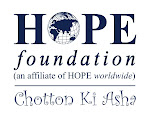
Innovation at the helm of social development is a force to reckon with. It has always been since ages, the motivation to progress, as is the need to carry it through. The motivation for social innovation catalysing a process is an
attributive contribution to the society. The social change that we speak of in the present context as well as in the past has always applauded the introduction of an innovative idea both for direct and indirect audience. But there has never been a dearth of criticism and opposition as well. As natural it can be, every social change is marked with both criticism and approval of the masses. The acceptance of the same idea has been the resultant of its success or failure. More then anything else, innovation for the masses has to comply with the needs of the masses and this has taken the fight to a much anticipated degree then usual.
Speaking of social innovation as the key component, the need of the masses is of prime importance to the one developing the idea. Not denying the fact that all other innovation had placed similar importance to its audience; social innovation becomes more people oriented. To further simplify, any social innovation as understood personally should have two very important elements. One, the innovation has to be replicable or can easily be implemented. Second, it should be cost-effective. Though other conditions and requirements should follow, these as understood should be the prime motivators or pushing factors.
Many organisations have in the past and in recent times also made many such changes in their interaction with the beneficiaries. The organisations here are more of the non-profit nature or non-governmental organisations as they are called. We talk of innovations at the implementation level when interactions are mentioned. It is rather an exciting affair to understand the complexity of all the simple ways being devised or adopted to get things running easily for the common people.
It is also important to look at how an innovative model of implementation has helped in making things easy for the people of a particular place and also for the organisation.
One such innovative model adopted by HOPE foundation and then by the Chotton Ki Asha program under the same institution was the ‘Centre of HOPE’ model. The Centre of HOPE is a model concept with HOPE foundation, opening project offices in the target area itself. This office besides the project concerned also develops various other courses or streams for the development of the area with a prior need assessment done. With Chotton Ki Asha project, the HOPE foundation has done the same. Besides the Maternal and Child Survival program with the USAID, the organisation is also running a number of vocational programs along with a computer centre. This strategically signifies the focus of HOPE foundation to develop the project area besides working on the concerned issue. The program focuses on the development of the youth in the area and their scaling up in skills required in the job world today. The program has an underlying strategy to develop gender sensitization and empowerment of the girl child. With the focus on girls, the program has prioritised the admission of more girls to the vocational courses.
An innovative model so designed is the involvement of the vocational training students in becoming ‘behaviour change agents’ in the health project. The curriculum of all the vocational courses in the “Centre of HOPE” has a community development component which need the students to volunteer for ….hours being a part of any program activity organised by the health project. A holistic development with sensitization in social issues helps the students to organise their skills better for the job world. Understanding the skills required to be a step further in today’s world with a high level of competitiveness among the job aspirants, these soft skills will be an advantage for the students.
Moreover these students in themselves will become responsible residents of the community and positive agents of health seeking behaviour and practices.
The success of any innovative model depends on the acceptance of the model by the beneficiaries, the adaptability of the model at different situations and its cost-effectiveness, especially when it is a community intervention.




